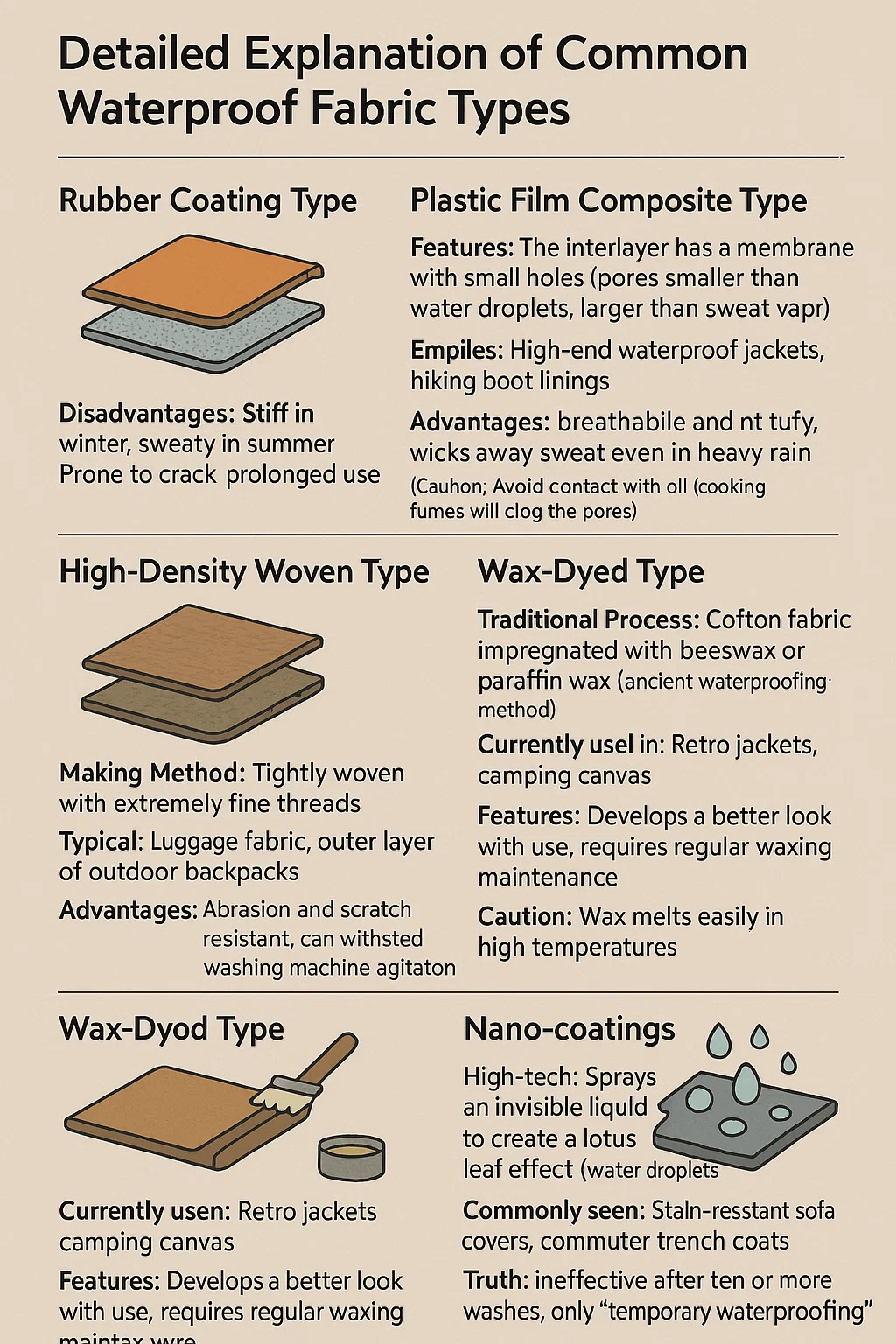
What are the different types of waterproof fabric?
Detailed Explanation of Common Waterproof Fabric Types
Content
1. Rubber Coating Type
Features: Like having a layer of rubber on the fabric, water cannot penetrate at all, but it feels stuffy.
Commonly used in: Construction raincoats, truck tarpaulins, simple umbrellas
Disadvantages: Stiff in winter, sweaty in summer, prone to cracking after prolonged use.
2. Plastic Film Composite Type
Features: The interlayer has a membrane with small holes (pores smaller than water droplets, larger than sweat vapor).
Examples: High-end waterproof jackets, hiking boot linings
Advantages: Breathable and not stuffy, wicks away sweat even in heavy rain.
Caution: Avoid contact with oil (cooking fumes will clog the pores).
3. High-Density Woven Type
Making Method: Tightly woven with extremely fine threads (the fabric holes are smaller than water droplets).
Typical: Luggage fabric, outer layer of outdoor backpacks
Advantages: Abrasion and scratch resistant, can withstand washing machine agitation.
Limitations: Water will slowly seep in during prolonged heavy rain.
4. Wax-Dyed Type
Traditional Process: Cotton fabric is impregnated with beeswax or paraffin wax (ancient waterproofing method).
Currently used in: Retro jackets, camping canvas
Features: Develops a better look with use, requires regular waxing maintenance
Caution: Wax melts easily in high temperatures
5. Nano-coatings
High-tech: Sprays an invisible liquid to create a lotus leaf effect (water droplets roll off)
Commonly seen: Stain-resistant sofa covers, commuter trench coats
Truth: Ineffective after ten or more washes, only "temporary waterproofing"
Distinguishing features: Water droplets don't stand up after being splashed (fake) VS Water droplets bounce (real)




 English
English 

 PREV
PREV







